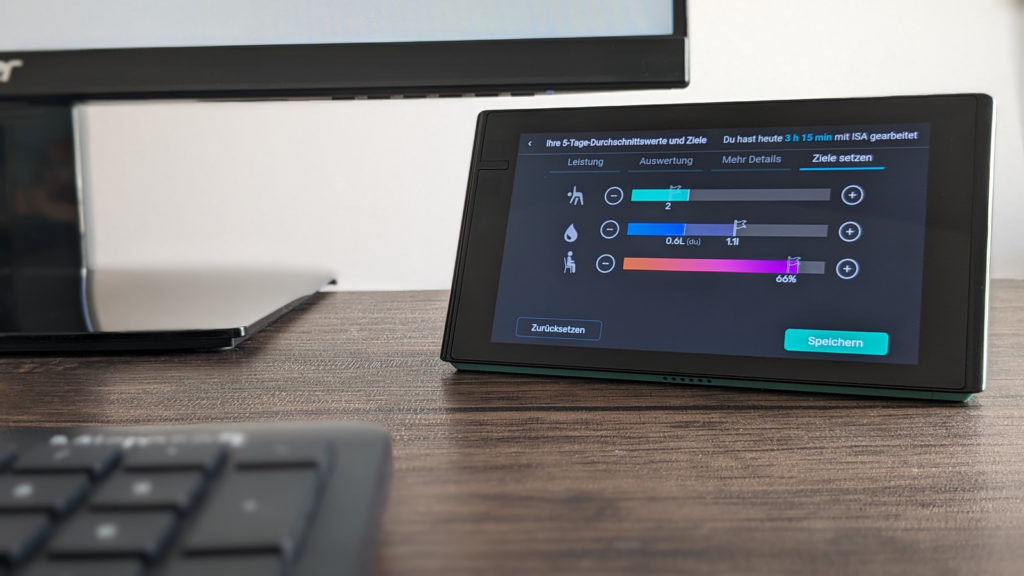
Workplace health promotion is one of the three pillars of the occupational health management (BGM). However, health promotion occupies a special position in this area, as it is voluntary. In contrast, occupational health and safety and occupational integration management are mandatory for employers. However, this does not mean that health promotion is any less important. On the contrary, sustainable behavioural change on the subject of health in the workplace is one of the most important issues for the future.
Definition of workplace health promotion
The topic of health in the world of work
Behavioural & situational prevention - two approaches for BGF
Digital solutions vs. analogue solutions
Funding from statutory health insurance companies
The question often arises as to what the difference is between OHM and BGF. Roughly speaking, you could say that WHP is "only" a part of OHM. Clearly defined, workplace health promotion is a holistic approach to promoting the health and well-being of employees. occupational health through preventive and reactive measures that increase the well-being of employees. In other words, BGF is about the actual implementation of measures that lead to the fulfilment of BGM objectives.
The topic of health in the world of work has become increasingly important in recent years. The sickness rate and the number of sick days are increasingly a problem in many companies, particularly due to mental illness. According to the DAK Health Report 2024, the sickness rate in 2023 was higher than ever before, for the second time in a row. Studies have shown that stress and overwork in the workplace can often lead to depression and anxiety. According to DAK, mental illnesses even lead to 7.4% more sick days. But illnesses and musculoskeletal problems are also on the rise. It is therefore important that companies pay attention to ergonomics in the workplace and more movement between longer periods of sitting in order to counteract physical strain.

In addition, the fact that many employees are working from home presents companies with further major challenges in terms of health and safety. If employees are given the opportunity to work from anywhere, solutions must be procured that ensure healthy and effective working conditions.
Health promotion for employees is not required by law. However, as already mentioned, this does not mean that health promotion is any less important. You could even say that, as an employer, this gives you the greatest possible freedom in organising the measures.
We have to recognise that working conditions are often very stressful and that health is still neglected in many areas. Many employees sit at their desks for eight hours a day and only get up for their lunch break. At the same time, we are exposed to a huge number of impressions and stress factors every day. This is clearly too little movement for so much stress and leads to back and neck problems. If you consider how much a sick day costs a company, it is definitely worth investing in prevention. Ultimately, it is about achieving a truly sustainable change in the daily behaviour of employees through various health promotion activities.
In order to successfully implement workplace health promotion, companies should consider a few basic points:
Before WHP measures can be implemented, the needs and wishes of the employees should be recorded. Employee surveys or health checks can be used for this purpose. Analysing working conditions can also be helpful in identifying suitable measures.
Specific goals and measures to be implemented should be defined on the basis of the analysis. Both short and long-term goals should be taken into account.
Employees should be actively involved in the WHF process in order to achieve greater acceptance and motivation. Employee workshops can be used for this purpose, for example.
Implementation should be systematic and sustainable. Good planning and coordination are important here. An evaluation of the measures can also be helpful in order to check their effectiveness.
Communicating the actions and results is important in order to achieve greater transparency and trust among employees. Various communication channels, such as the intranet or newsletter, should be used for this purpose.
A fundamental distinction is made between prevention and reaction in occupational health promotion measures. Preventive measures are designed to prevent illness, while reactive measures are designed to combat illness.
Choosing the right measures is crucial to the success of an employer's health promotion programme. That's why we take a look at what should be considered when making a selection.
Before companies select the measures, in the best case scenario they have drawn up a concept for general occupational health management. Operational targets have been agreed here, which now need to be fulfilled. This is exactly where the BGF measures come in. This means that OHM managers should pay close attention to which measures are suitable for which operational goal.
Take some time to look at the status quo. You should always keep the following questions in mind:
There are a large number of measures that cover a wide variety of focal points. Make a list of the most interesting ones and then prioritise them. Ideally, you should test the various solutions directly with employees to get honest feedback.
Behavioural and behavioural prevention are two approaches that are often discussed in the context of health promotion and disease prevention. Both approaches aim to reduce the risk of illness and injury, but they differ in their focus and methods.
Behavioural prevention focuses on individual behaviour and aims to improve the health literacy and behaviour of individuals. This can be achieved through measures such as information campaigns, individual counselling or behaviour change programmes. An example of behavioural prevention is the smoking cessation campaign, which informs individuals about the negative effects of smoking and encourages them to quit.
In contrast, relationship prevention focuses on creating health-promoting environments and structures. This can be achieved through changes to the physical or social environment, such as the promotion of cycle paths or the introduction of healthy meals in school cafeterias. An example of relationship prevention is the installation of lowered pavements and ramps to facilitate access for wheelchair users and other people with limited mobility.
In the past, companies often only had the option of Health days to organise. Employees were able to take part in these on a voluntary basis, which has been used less and less in recent years. The process also has the disadvantage of being a snapshot in time. Employees were able to take away individual impulses, but usually did not pursue them in the long term, which was not conducive to the goal of sustainable behavioural change. However, this is not the fault of the companies or the people responsible. There were simply no other solutions! Things are very different nowadays. There are countless digital and analogue solutions for workplace health promotion.
Of course, this is very difficult to generalise. However, it is clear that analogue solutions such as the Health Day are no longer up to date. Nowadays, health is an all-encompassing topic and employees don't just want it twice a year, but always and everywhere. This is why digital programmes are so important. They enable companies to guarantee a great working environment even when working from home, for example. The Prevention dilemma plays an important role. Measures are only truly effective if all employees can benefit equally.
Since everyone has been talking about AI, there has naturally been a demand for it. The offerings have evolved from analogue to digital and the next logical step is AI-supported solutions, such as the ergonomics coach Isa.

The question of costs is an important one. It is obvious that the BGM providers will not be completely free of charge. Of course, it depends on which solutions and services you want to use. However, the good news is that there are various subsidies that can reduce costs.
The decisive factors for funding through statutory health insurance are the Prevention Act (PrävG) and the Social Code with the articles § 20 and § 20b.
Article § 20b SGB V describes that health insurance funds promote health promotion services in companies, in particular the development and strengthening of health-promoting structures.
Section 20 SGB V also specifies the exact amount. Health insurance funds must invest €3.15 per insured person.
What this support looks like in practice is regulated by the Prevention guidelines of the GKV. These guidelines set out all the qualitative criteria for primary prevention and health promotion that apply to the provision of health insurance services.
According to this guide, health insurance companies can support companies with two services:
It is not only health insurance companies that support companies in keeping their employees healthy. The state also plays its part. The Income Tax Act §3 No. 34 EStG stipulates that companies may provide each employee with up to €600 per year tax-free (wage tax and social insurance). This benefit only applies to measures that fulfil the criteria of §20 and §20b SGB V and are provided in addition to the wages already owed.
Tip:
The BGM budget of €600 is an allowance and not a tax-free limit. If the costs exceed €600, only the excess amount is subject to income tax and social security contributions.
This regulation applies to every employee. It does not matter whether you are a full-time employee, mini-job or management. In addition, the amount can be claimed several times per year from different employers.
Workplace health promotion is important in order to improve the health and well-being of employees and thus increase their motivation and willingness to perform. By systematically and sustainably implementing workplace health promotion measures, companies can achieve many benefits, such as an increase in productivity or a reduction in absenteeism. Costs can also be reduced by utilising funding opportunities. However, successful implementation of WHP requires good planning, coordination and communication as well as the active involvement of employees.